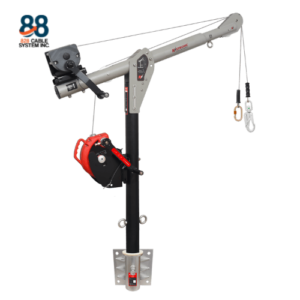Confined space rescue operations are critical in ensuring safety when working in restricted and hazardous environments, such as cargo holds, boilers, and pressure vessels. These areas often present significant risks due to their limited access, poor ventilation, and potential for hazardous conditions. Understanding and implementing best practices for confined space rescue can be the difference between a successful operation and a tragic outcome. In this blog, we’ll explore essential best practices to follow, focusing on safety, equipment, training, and procedures.
Understanding Confined Spaces
Confined spaces are defined as areas that are not intended for continuous occupancy and have limited or restricted means of entry or exit. Common examples include cargo holds, fuel oil tanks, and void spaces on cargo ships. These environments pose unique challenges, such as restricted access, lack of fresh air, and potential hazardous conditions. Recognizing the characteristics of confined spaces is crucial for planning safe rescue operations.
Risk Assessment and Planning
Before entering a confined space, a thorough risk assessment is essential. This involves identifying potential hazards such as toxic gases, low oxygen levels, or flammable materials. Developing a comprehensive rescue plan involves outlining procedures for safe entry, emergency response, and evacuation. By evaluating risks and planning accordingly, you ensure that all potential dangers are addressed, and appropriate measures are in place.
Essential Rescue Equipment
The right equipment is vital for the success of confined space rescue operations. Essential gear includes:
Rescue Harnesses: For securing and hoisting personnel safely.
Breathing Apparatus: To provide clean air in environments with poor ventilation.
Communication Devices: To maintain contact between the rescuer and team members.
Regular maintenance and checks on this equipment are crucial to ensure functionality and reliability during an emergency.
Personal Protective Equipment (PPE)
Personal protective equipment is the last line of defense but crucial for ensuring the safety of rescue personnel. Depending on the confined space’s hazards, necessary PPE may include:
Helmets: To protect against falling objects and impacts.
Gloves: To safeguard hands from sharp edges and chemicals.
Eye Protection: To shield eyes from debris and harmful substances.
Proper use of PPE should be prioritized, especially in environments where hazards cannot be fully controlled or eliminated.
Training and Competence
Effective rescue operations depend on well-trained personnel. Training should cover:
Rescue Techniques: How to safely perform rescues in confined spaces.
Emergency Response: How to react to various emergency scenarios.
Certification: Ensuring team members are certified and knowledgeable in confined space rescue procedures.
Regular drills and practice sessions help maintain skills and readiness, ensuring that rescue teams are prepared for any situation.
Safety Procedures and Protocols
Adhering to safety procedures and protocols is vital for a successful rescue operation. Key procedures include:
Safe Entry: Ensuring proper procedures are followed before entering a confined space.
Emergency Protocols: Having clear plans for evacuation and emergency responses.
Communication: Maintaining open lines of communication among team members to coordinate actions effectively.
These protocols help manage risks and ensure a systematic approach to rescue operations.
Monitoring and Continuous Improvement
Continuous monitoring of confined space conditions is essential to ensure safety throughout the rescue operation. Regularly reviewing and updating rescue plans and procedures based on past experiences and incidents helps improve practices. Learning from real-life scenarios and adjusting protocols accordingly enhances the effectiveness of future operations.
Takeaway
Implementing best practices for confined space rescue operations is crucial for ensuring the safety of personnel and the success of rescue efforts. By understanding confined space characteristics, conducting thorough risk assessments, utilizing the right equipment, and following established procedures, you can effectively manage the risks associated with confined spaces. Continuous training, monitoring, and improvement are essential for maintaining high safety standards. Prioritize these practices to protect lives and ensure successful rescue operations.

